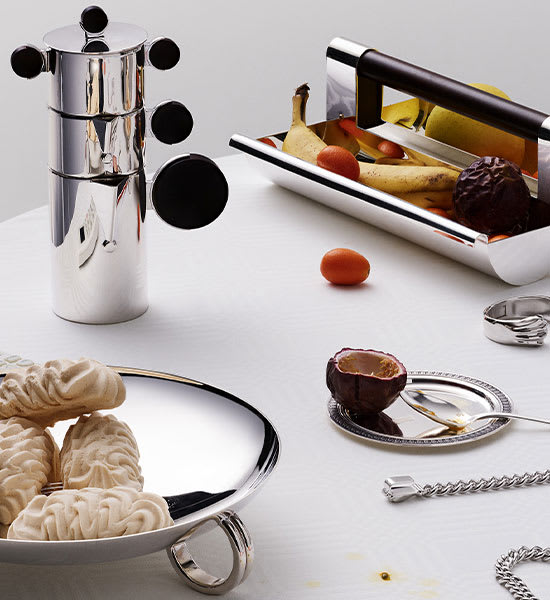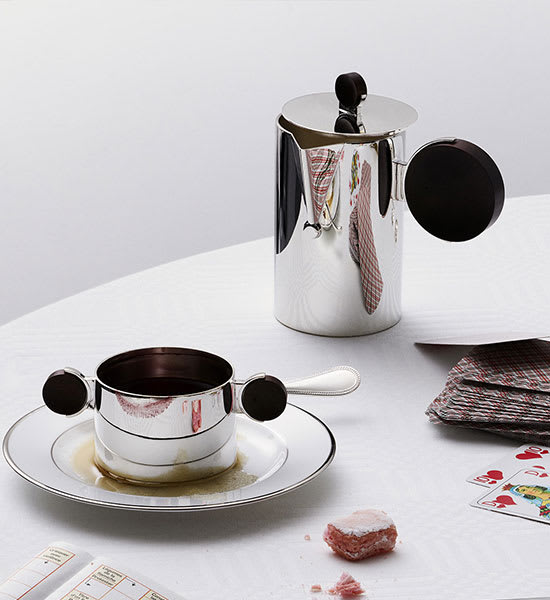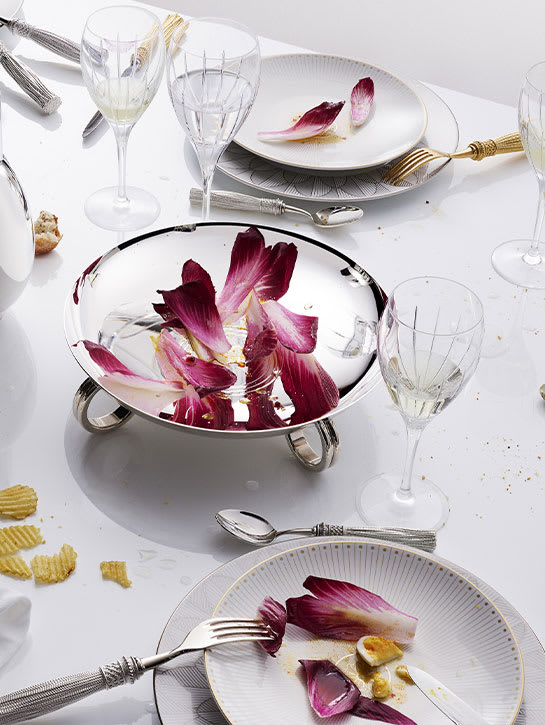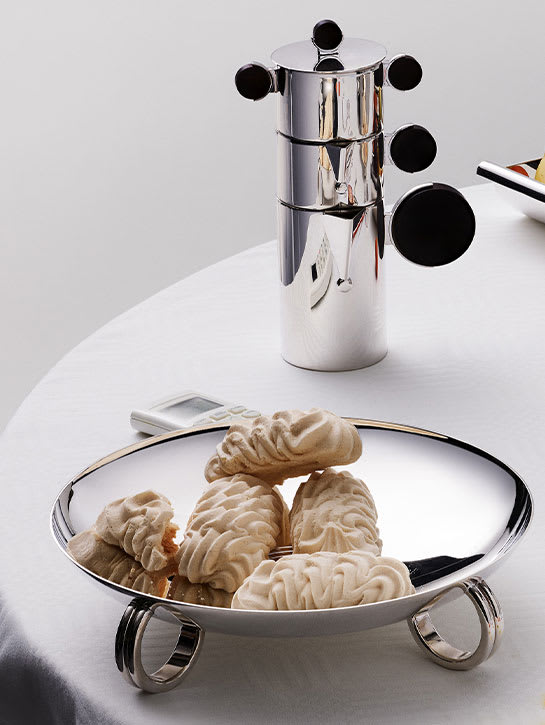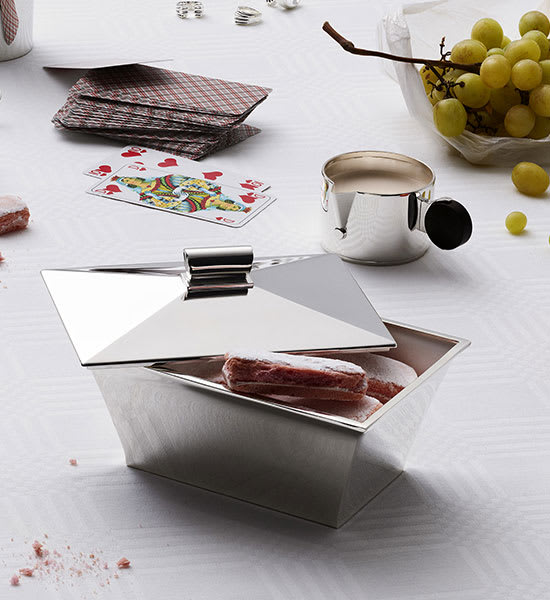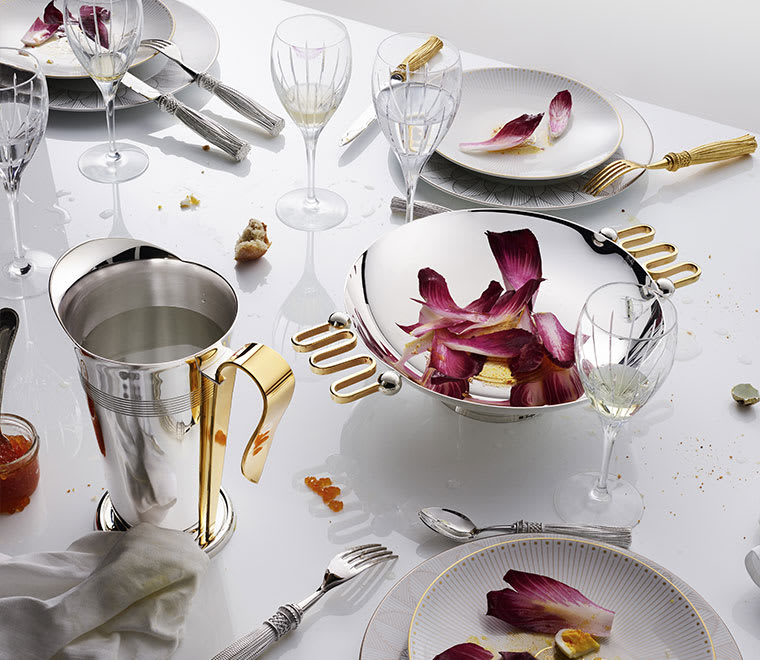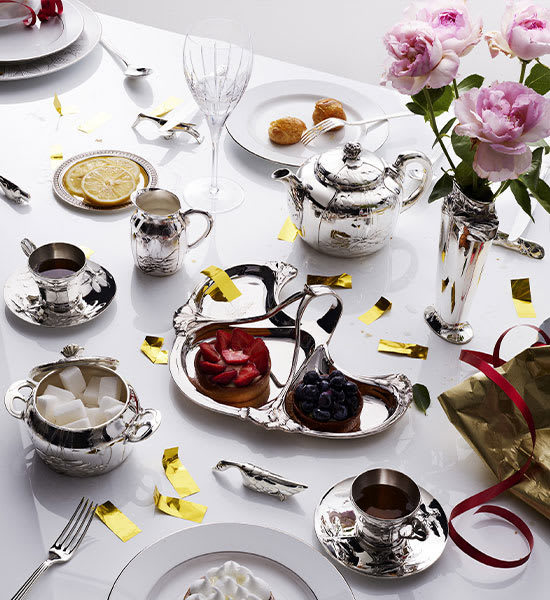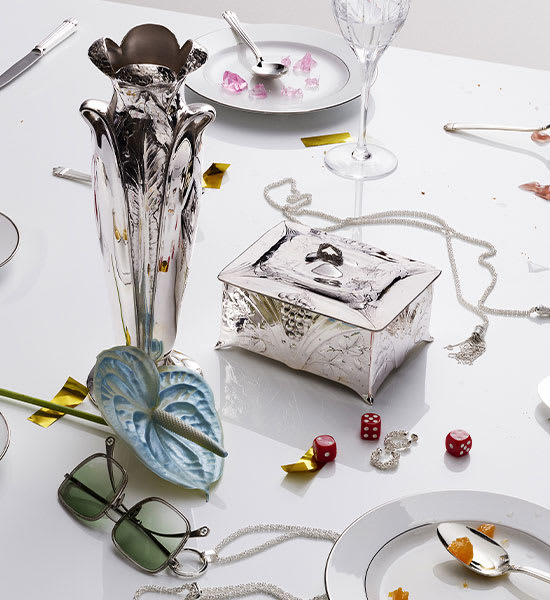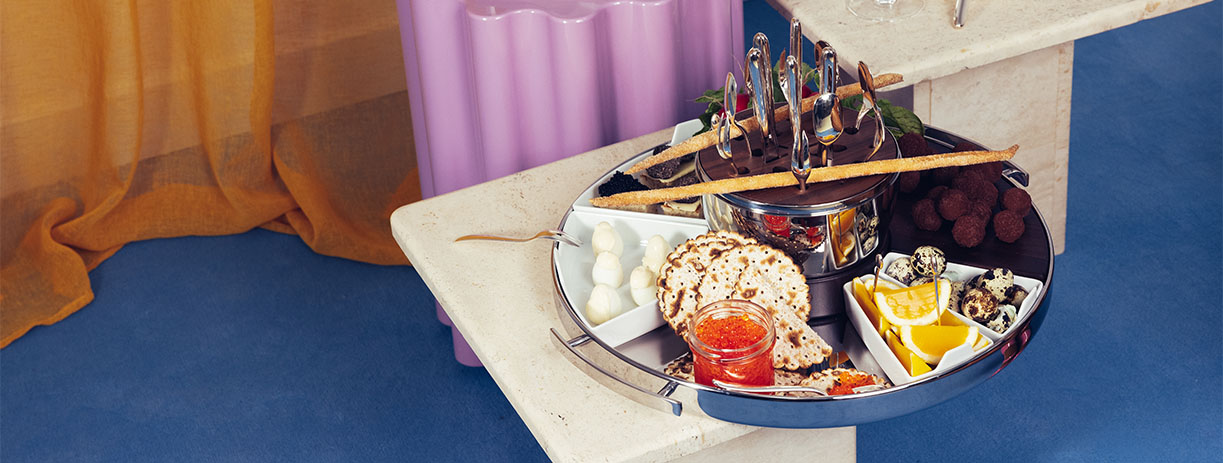THE FJERDINGSTAD COLLECTION
AN ODE TO CURVES
Christian Fjerdingstad was a Danish silversmith born in 1891.
He worked with Christofle from 1924 to 1940 under the aegis of Luc Lanel: both were key representatives of the brand's Art Deco movement.
This year, for the first time, Christofle is reissuing a selection of exceptional pieces created by Christian Fjerdingstad,
including two major design classics: the Stork Coffee Pot of 1926 and the "1925" Tea & Coffee Service.
GIGOGNE COFFEE POT
The Stork Coffee Pot's bold, smart design heralded the growing popularity of the Modernist style and even some Post-Modernist Italian creations of the 80s.
FOUR-RING CENTERPIECE
The 4-ring centrepiece, a bowl created by Fjerdingstad in 1935, has rings that serve as an elegant base.
BISCUIT BOX
The biscuit tin's geometric purity and simple elegance are a testament
to the teachings of the Art Deco style in the interwar period in Europe.

WATER JUG WITH GILDED HANDLE
A water jug with a gilded handle,
made in 1936 by Fjerdingstad.
Its golden handle emphasizes the lightness of the piece.
CENTERPIECE WITH GILDED HANDLES
The two-handle centerpiece, a round bowl with golden handles whose simplicity and geometric lines are enhanced by a simple wavy golden ornamentation motif.
FOUR-PART WATER PITCHER
Four-part water pitcher called "Normand" designed by Christian Fjerdingstad in 1926 after the 1925 exhibition which gave its name and impetus to the new Art Deco style.
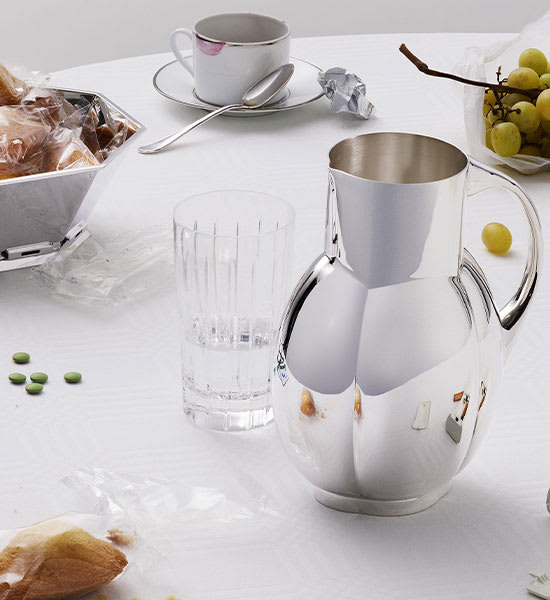
BOOKMARKS
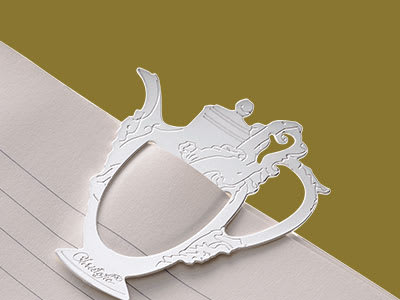
The 1925 bookmark: a depiction of the iconic carafe from Christofle's 1925 Service. A minimalist object that perfectly embodies the simplicity and geometry of Art Deco.
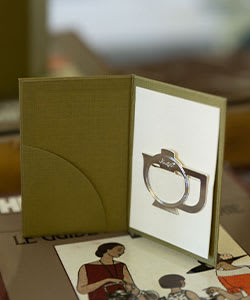
The Carrier-Belleuse bookmark: a depiction of the "Success Through Unity" Coffee Pot designed in 1880 by the famous sculptor Albert-Ernest Carrier-Belleuse. A key figure in the 19th century renewal of Decorative Arts, he benefited from the trust and support of Emperor Napoleon III throughout his career.
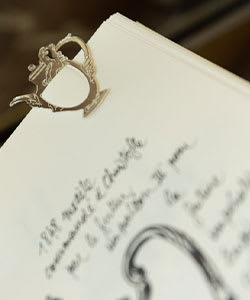
GALLIA COLLECTION
THE RETURN TO NATURE
Created at the turn of the 20th century, at the time of the famous 1900 Paris Exposition, the Gallia collection takes its name from a tin alloy of enormous importance in its time.


